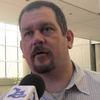Explore all the information on
Amino acids in poultry nutrition
Adequate provision of dietary amino acids is required to maintain normal immunocompetence and protection of the host from some diseases in all species (Beski et al. 2015). Therefore, the development of immune function in poultry will be promoted if they receive sufficient amino acids in their diets. The essential amino acids for poultry are arginine, glycine, histidine, leucine, isoleucine, lysine, methionine, cystine, phenylalanine, threonine, tryptophan, and valine. Out of these, the ones critical in practical diets are arginine, lysine, methionine, cystine and tryptophan.
Introduction Current poultry production targets at reducing productions costs and nitrogen excretion into the environment while maintaining an effective animal performance. The key to limit nitrogen excretion is a reduction of the protein content of the diet with concurrent supplementation of deficient and (performance-)limiting amino acids (AA). The aim is to provide balanced quantities of individual AA at the sites of protein synthesis, which have to be further balanced with...
Comments : 0
Recommendations: 0
1. Introduction Broiler chicken feed represents approximately 75% of production costs, a figure that is expected to increase due to the commodity nature of animal feed ingredients, especially soybean oil, a primary raw material in feed production [1,2]. Currently, there are few alternative energy sources to soybean oil available for reducing production costs in poultry farming. Given these challenges, there is a growing need to explore alternative energy sources in broiler...
Comments : 2
Recommendations: 0
ARLINGTON, Va. – The American Feed Industry Association (AFIA) is calling on U.S. policymakers, trade officials and the food and agriculture industry to work together on mitigating the potential threat of a U.S. vitamin and amino acid supply disruption. The call comes following the release today...
Comments : 0
Recommendations: 0
Introduction Over the years, nutritionists have studied several ways to determine the ideal dietary supply of essential amino acids to optimize poultry performance. However, considering only performance objectives without taking into account economic factors may not reflect maximum profitability, since optimizing performance is not always viable (Pack et al., 2003). An economic approach to determine amino acid supply by minimizing feeding costs and maximizing revenues was...
Comments : 7
Recommendations: 4
Mike Persia (Virginia Tech) talks about the benefits of Direct-Fed Microbials (also Sulfur Amino Acid supplementation) to help manage the adverse effects of heat stress, in this interview during IPPE 2023 in Atlanta, USA....
Comments : 69
Recommendations: 9
• Fully automated filling installation for big bags
• Flexible packaging capability supports tailor-made orders
• Contribution to global supply security for MetAMINO®
Essen, Germany. Evonik utilized the shutdown of the methionine facilities in September and...
Comments : 0
Recommendations: 0
Compilation of a project KEY INFORMATION A series of 5 commercial feeding trials was performed from which 4 trials took place on commercial broiler farms growing between 300,000 and 420,000 broilers per cycle. Dietary protein was...
Comments : 28
Recommendations: 5
1. Introduction The production of black soldier fly larvae (Hermetia illucens, BSFL) has been established globally in recent years. Advancements in production and processing technology have facilitated the large-scale rearing of BSFL, which can be attributed to the insect’s affinity to thrive in a wide array of organic substances [1]. These can include by-products from grain, oil seed and food processing, food waste and by-products from animal processing, and even manure...
Comments : 0
Recommendations: 0
I. INTRODUCTION Microbial enzymes are now routinely used in broiler chicken diets to reduce the effects of antinutritive factors (ANF) in feed and/or improve the digestion of nutrients (Bedford, 2011). There is a suite of enzymes that target ANF such as non-starch polysaccharides (NSP) and phytic acid as well as products which improve the digestion of nutrients such as protein and minerals. The major cereals used in poultry diets are wheat, maize, sorghum and barley. The objective of...
Comments : 0
Recommendations: 0
With approximately 30.2-56% crude protein (CP), cottonseed meal (CSM) is regarded as one of the closest alternative protein sources to soybean meal (SBM). It is used at relatively low levels to replace soybean meal in diets for broiler chickens (Swiatkiewicz et al., 2016). While its value at such low levels has been well established, the potential for using CSM at higher levels when fed as such or supplemented with microbial enzymes is not well understood. Similarly, there have been...
Comments : 0
Recommendations: 0
1. Introduction There is considerable interest in the successful development of low protein diets for broiler chickens, which axiomatically contain high inclusions of supplemental amino acids. This is because low protein diets have the potential to generate economic, environmental and bird welfare advantages. Formulation of low protein diets are usually achieved by decreasing...
Comments : 1
Recommendations: 2
April Santos (Evonik Animal Nutrition) explains how tributyrin, a form of butyric acid, enhances gut integrity, immune function, and nutrient absorption in poultry. Learn how this solution replaces antibiotic growth promoters for a more sustainable and safe food future....
Comments : 1
Recommendations: 1
I. INTRODUCTION Low-protein diets for broiler chickens axiomatically contain high inclusions of supplemental amino acids and have the potential to generate economic, environmental and bird welfare advantages. Low-protein diets are usually formulated by reducing soybean meal inclusions and increasing inclusions of a range of supplemental amino acids. An alternative approach was adopted in the present study where dietary protein levels were reduced by the partial replacement of maize...
Comments : 0
Recommendations: 0
Dr. Óscar Vázquez from Evonik highlights how high-digestibility ingredients, metabolic additives, and GuanAMINO supplementation improve energy utilization, reduce feed costs, and enhance broiler performance sustainably. ...
Comments : 0
Recommendations: 2
All commercial poultry eat with reasonably good precision to balance nutrient intake with requirements. Short term, there can be some variation in feed intake related to local situations, but long-term, the mechanisms of feed intake regulation are quite precise. Matching nutrient needs with intake is an obvious inherent evolutionary necessity to ensure survival and reproduction. A bird’s daily consumption of feed ultimately governs its health, growth, body composition and potential for...
Comments : 25
Recommendations: 10
1 Introduction The rising number of recently reported human illnesses with bacterial infections resistant to multiple antibacterial agents has become a fundamental concern in recent years [1, 2]. This phenomenon has become a serious concern with regard to the emergence of antibiotic-resistant bacteria called “superbugs” [3, 4], especially when considering that humans only started using antibiotics in the past century with Sir Alexander Fleming’s discovery of...
Comments : 2
Recommendations: 1
Discover how GAA enhances energy metabolism in broilers, improves growth, and spares costly ingredients like arginine and fats. Learn why it's more efficient than L-arginine and how it supports better performance and cost savings in poultry diets. ...
Comments : 1
Recommendations: 3
I. INTRODUCTION The digestive dynamics of starch and protein are considered pivotal to broiler performance (Liu and Selle, 2015). Moreover, it was proposed that the rates of starch digestion and glucose absorption exceed the rates of protein digestion and amino acid absorption and this asynchrony in digestive dynamics compromises the performance of broiler chickens. If so, it follows that the provision of rapidly-digestible protein should enhance broiler performance in a reciprocal...
Comments : 0
Recommendations: 2


Feed Granulometry and the Importance of Feed Particle Size in Layers
Suggested link
In previous assays (Macelline et al., 2022), data on egg production rate (EP) and egg mass (EM) of Isa Brown layers from 27 to 33 weeks of age (peak production -PP) and from 42 to 48 weeks of age (Post PP) were used to predict amino acid (AA) requirements by fitting linear broken-line (LBL), and quadratic broken-line (QBL) models. Subsequently, the ideal ratios of Ile, Met + Cys, Thr, Trp, and Val relative to Lys for maximal EM and EP were determined. The current feeding study was...
Comments : 1
Recommendations: 1
I. AMINO ACIDS: TOWARDS MORE PRECISE FORMULATION Dietary protein reduction in swine or poultry is driven by economic, environmental and societal issues - the three pillars of sustainability. Formulating on the basis of each indispensable amino acid (IAA) instead of a minimum crude protein (CP) level allows a reduction in feed cost, a decreased dependency on imported soybean meal, and a lower pressure on animal health. In addition, the increasing availability of feed grade amino acids...
Comments : 0
Recommendations: 0










.jpg&w=3840&q=75)












.jpg&w=3840&q=75)










